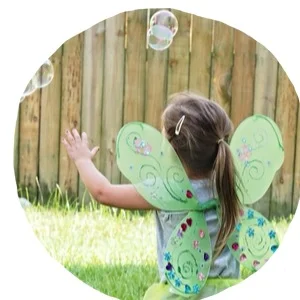Simple Ways to Create a Montessori-Inspired Peace Corner at Home
/Many families use the time out chair or some small spot in the house to send thier child to when they are "misbehaving". During those tuff moments it helps to have a space for children to go to relax and think about their actions, but sometimes the time out chair isn't the most effective for all children. Some children can benefit from having a personal environment with tools to help them relax and calm down. That's why there's a peace corner!
Why create a peace corner for my child at home?
When children seem sad, tired, upset or definat in a Montessori classroom they are often redirretced to the peace corner. The intention is to have a space where children can have a place to help calm themselves down. You can create a Montessori-inspired peace corner like this at home.
Like adults, children also need inviting space to regroup at times. A peace corner provides not only a comfortable spot to play in but it also becomes a great source for redirecting during challenging moments too. The purpose of the “peace corner” is to support peace within ourselves and others by using materials that represent and encourage positive behaviors, mindfulness and self-reflection.
You may also use it has a space for your child to cool off and redirect him/herself independently. Then you can calmly approach your child after you have reflected on how to take this challenging moment and turn into a learning one. Sending your child to this space also gives you the time to calm down by walking away from them to think about realistic consequences you will set follow through with. Through that consistent practice, this space will support building a deeper collaborative relationship with your little one.
How to Create a Peace Corner
Find a Spot
First, find a place in your home you know would be ideal for your child to safely access anytime. It doesn't have to be a corner in the home necessarily, the key is that it must be a calm area your child can really have some personal space. If you already have a "library or book nook" for you hild at home you can easliy intergreat the peace corner within that same space. Consider decluttering in and around the space you choose. Natural lighting and simplicity are two components that help create an inviting nook your child will really enjoy and use.
Consider
Anything you use in this space should be looked at with some type of positive purpose for your child. Age, personal interest and level of development should be considered when choosing materials for this space. If you have multi-age children at home it is key to consider each child's personal interest too.
Gather
- Small Mirror
- Images of Emotions
- Peaceful/ Happy/Family Images
- Manipulative Toys/Objects
- Sensorial Object
- Books Related to Purpose
- Timer
- Pillows
- Carpet
You can find one of a kind nick-nacks, objects and even pictures like these in second hand stores, local shops or online boutiques. Read the purpose of items listed below so you have an understanding of what to look out for before you gather items.
- Small Mirror: A mirror is a great way to for your child to gain self-awareness by noticing his facial expressions during different moods (happy, sad, angry).
- Images of Emotions: Images help the child distinguish what words to use when expressing their feelings. Ex: I feel “happy” when we play together.
- Peaceful/ Happy/ Family Images: Pictures help communicate what peace looks like around the world and at home. You can find art works of landscapes, pictures of influential people and even your own family pictures of happy moments.
- Manipulative's: Simple objects your child can play with in the peace corner will not only promote concentration and relaxation but inspire creativity.
- Sensorial Object: Any safe and pleasant items your child can smell, hear or feel to support sensory stimulation.
- Books: Books related to the purpose of the space will also help your child calm down and can become a great tool to use as a conversations starter after a heated moment.
- Timer: Any timer will do the trick! Sand timers make a meditative tool to look at as the time goes by. Having a timer in this corner also becomes helpful during those tuff moments you need to give your child a time limited time to calm down.
- Pillows & Carpet: You want this space to feel comfortable and cozy. Other wise the space will feel stiff and uninviting.
Keep in Mind
Use your creativity when creating this space for your child. Remember you can rotate the items to avoid cluttering and to keep your child interested in the simplistic space.
May peace be with you! :)





